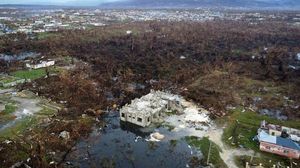Across the globe, families are shrinking. Whether in the suburbs of Buffalo, New York, or the heart of Moscow, the decision to have fewer children—or none at all—is reshaping societies, economies, and even the fabric of national identity. The implications of this demographic transformation are profound, touching everything from labor markets to social security systems, and sparking fierce debates about tradition, progress, and the future of entire nations.
In Russia, President Vladimir Putin has spent more than 25 years confronting his country’s declining and aging population. The crisis, which began before he rose to power, saw its nadir in 1999—the year before Putin officially became president—when Russia recorded its lowest birth rate on record, according to The Independent. Putin has repeatedly acknowledged the gravity of the situation. In 2005, he insisted that maintaining “social and economic stability” was essential to reversing population decline. At a demographic conference at the Kremlin on October 23, 2025, Putin once again stressed that boosting the birth rate was “crucial” for Russia’s future.
To combat the trend, Putin’s government has rolled out a series of initiatives, both practical and symbolic. From providing free school meals for large families to reviving the Soviet-era “hero mother” medals for women who have ten or more children, the state is pulling from a deep well of tradition. “Many of our grandmothers and great-grandmothers had seven, eight, and even more children,” Putin said in 2023, urging Russians to “preserve and revive these wonderful traditions. Having many children and a large family must become the norm.”
But the numbers tell a sobering story. Russia’s birth rate climbed from 1.21 million babies in 1999 to 1.94 million in 2015, buoyed by a period of economic growth. Since then, the gains have evaporated. Annual births have fallen, and deaths now outpace new arrivals. The federal statistics service reports that Russia’s population has dropped from 147.6 million in 1990 to 146.1 million in 2025—a figure that includes Crimea’s roughly two million residents since its 2014 annexation. The country is also getting older: in 1990, just over 21% of Russians were 55 or older; by 2024, that share had reached 30%.
February 2025 brought an especially bleak milestone: according to demographer Alexei Raksha, Russia marked its lowest monthly birth figure in over two centuries. The fertility rate now stands at 1.4 children per woman, well below the 2.1 needed to maintain a stable population—and even lower than the U.S. figure of 1.6, as reported by the Centers for Disease Control and Prevention.
Russia’s approach to the crisis has not been limited to incentives. The government has tightened restrictions on abortion, banned the promotion of “child-free ideology,” and outlawed all LGBT+ activism in the name of “traditional family values.” New state holidays like Family, Love and Fidelity Day and Pregnant Women’s Day have been created since 2022. Some regions have outlawed encouraging abortions, and national legislation in 2024 targeted “child-free propaganda.” Critics say the measures are often vaguely worded and open to broad interpretation—enough, for example, to force a reality TV show to change its name from “16 and Pregnant” to “Mommy at 16.”
For many Russian women, these policies have made already sensitive decisions even more fraught. One 29-year-old woman, speaking anonymously to reporters, explained that she turns to private clinics to avoid intrusive questioning about her reproductive plans. “Whether I plan to have children, whether I don’t plan to have children—I don’t get asked about that at all,” she said, adding that state-run clinics are “a completely different story.”
Access to abortion, while still legal and widely available, has become more difficult. Some private clinics have stopped providing the service, and new laws have restricted the sale of abortion-inducing pills and emergency contraceptives. State clinics, where waits are longer, now sometimes refuse abortions on certain days. Women must also complete mandatory counseling and endure a waiting period of 48 hours to one week—sometimes pushing them past the legal window for an abortion. While the number of abortions has steadily declined, there has been no corresponding increase in births. Activists warn that restricting abortion will only drive the practice underground, endangering women and children. “The only thing you will get from this is illegal abortions. That means more deaths: more children’s deaths and more women’s deaths,” said journalist and feminist activist Zalina Marshenkulova.
Financial incentives—such as cash certificates for parents that can be used for pensions, education, or subsidized mortgages—have been popular, but other initiatives, like one-time payments of about $1,200 to pregnant teenagers, have drawn criticism for potentially encouraging teen pregnancies. Symbolic gestures abound, but the underlying economic and social uncertainties remain. The war in Ukraine, ongoing economic instability, and a mass exodus of young men have further shrunk the pool of potential parents. As Jenny Mathers of the University of Aberystwyth explains, “You’ve got a much-diminished pool of potential fathers in a diminished pool of potential mothers.”
Russia’s reluctance to embrace immigration as a solution compounds the problem. The Kremlin has recently stoked anti-migrant sentiment, tightened restrictions on migrants’ employment, and impeded their children’s access to education. Central Asians, who have long filled gaps in Russia’s workforce, are increasingly looking elsewhere, wary of discrimination and economic instability. As Mathers points out, “An open-ended major war doesn’t really encourage people to think positively about the future.”
This demographic dilemma is hardly unique to Russia. As NPR reports, families in the U.S. and around the world are having fewer children, triggering a global shift toward rapidly aging and gradually shrinking populations. The average number of children per family worldwide has dropped by more than half since the 1970s, according to United Nations data. In prosperous countries like the U.S., the trend is especially pronounced. The birth rate in the U.S. fell to 1.6 in 2024—the lowest ever recorded. In countries such as China, Japan, Italy, and South Korea, deaths now outpace births, and the population is already shrinking.
Melissa Kearney, an economist at the University of Notre Dame, warns that this issue “is poised to potentially remake so much of our society.” With populations aging and shrinking, many of the world’s largest economies face a future where people work longer, businesses struggle to find employees, and social safety nets are stretched to the breaking point. Nicholas Eberstadt of the American Enterprise Institute notes that “the way public finances are organized makes no sense if you’re heading into an aging, shrinking world.”
Some experts see the trend as a natural result of social progress—greater economic opportunities for women, lower rates of teen pregnancy, and the rising costs of raising children. “There is no optimal birth rate,” says Harvard economist Claudia Goldin, arguing that much of the anxiety is more political than practical. Still, governments from the U.S. to Greece are experimenting with incentives to encourage larger families, though past efforts have shown limited success.
For families like Ashley and Nick Evancho in New York, the decision to have only one child is both economic and personal. “I don’t need another one. I don’t want another one. I love having only one child,” Ashley told NPR, reflecting a sentiment increasingly common in the U.S. and abroad. Her husband Nick, an Episcopal priest, added, “It really stacks the chips economically against you.”
As societies grapple with these seismic changes, one thing is clear: the era of ever-expanding populations is over. The challenge now is to adapt—to reimagine economies, social programs, and cultural expectations for a world where families are smaller, populations are older, and the future is anything but certain.




